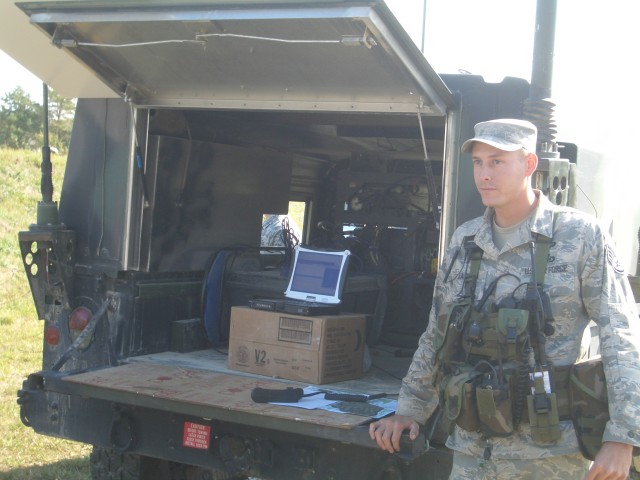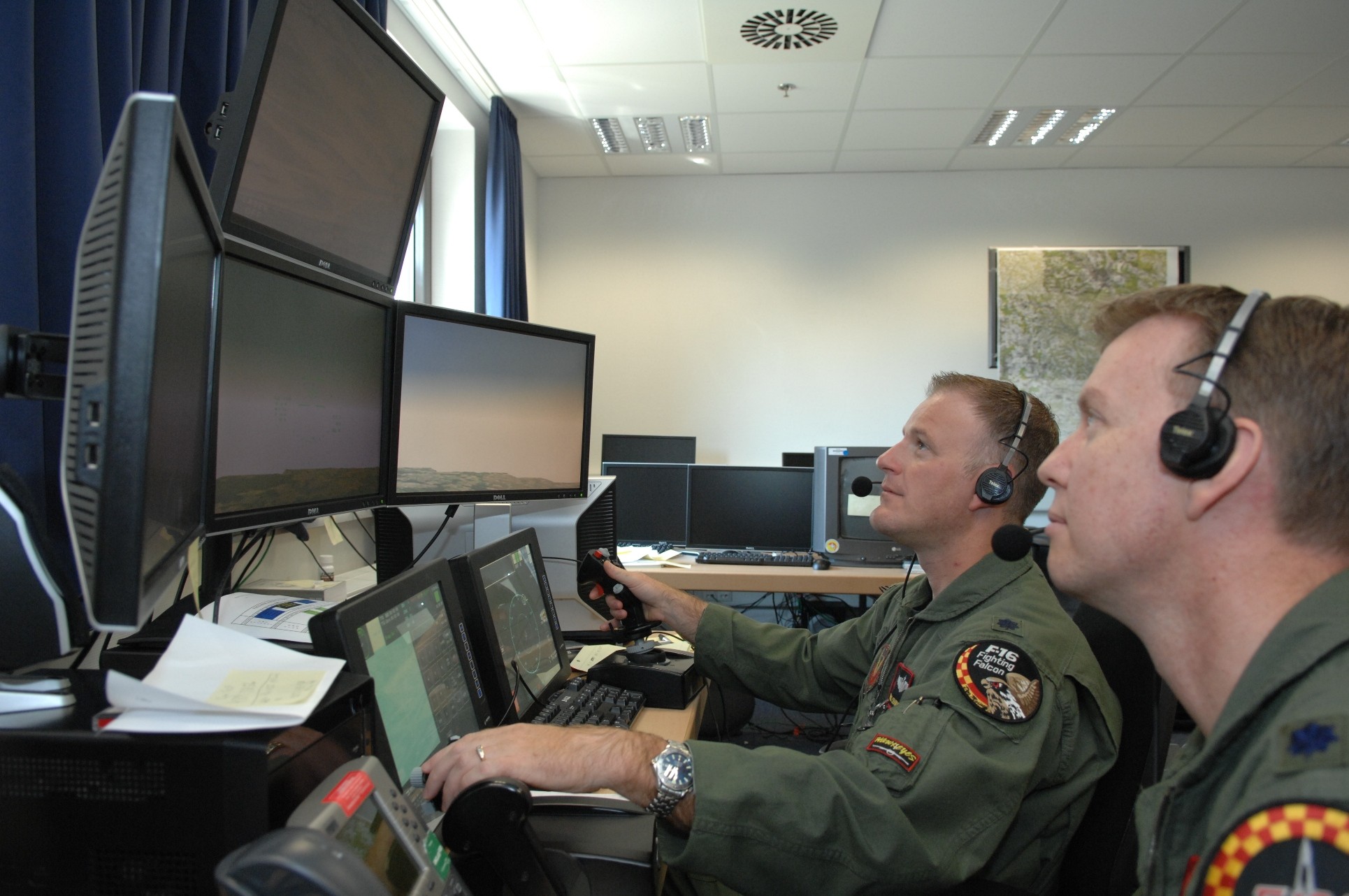HOHENFELS, Germany (Sept. 25, 2009) -- For the first time in Europe, the U.S. Air Force and the U.S. Army trained with virtual aircraft attacking real targets on the ground in Hohenfels, Germany.
On Sept. 14, joint and multinational forces participated in a proof-of-concept exercise for a new virtual fighter simulator called the Advanced Tactical Aircraft Simulator, or ATAS, as part of the recent mission-rehearsal exercise at the Hohenfels Training Area to prepare the 173rd Airborne Brigade Combat Team and 12th Combat Aviation Brigade for an upcoming deployment.
The Joint Multinational Training Command in Grafenwoehr, Germany, and the Warrior Preparation Center, near Ramstein Air Base, consistently work together to enhance the overall joint training experience.
During the recent exercise, a Joint Terminal Attack Controller , or JTAC, an Airman that directs aircraft to destroy targets within close proximity to ground forces, viewed live targets on the ground. He called for close air support from a pilot flying a virtual fighter aircraft.
The ATAS received an electronic feed of the targets provided by a MILES II instrumented system at the Hohenfels range, which represented the live assets on the ground. These assets included Soldiers operating in the training environment and their vehicles, all in real-time. A pilot at the Warrior Preparation Center, about four hours away from the training site, saw the battlefield, and was able to destroy these real-world targets.
A spectator, Navy Capt. Scott Fisher of Joint Forces Command, said the successful use of the ATAS could ease the burden of having to have actual aircraft airborne in support of JTACs on the ground, since it's not uncommon for an aircraft to be grounded because of bad weather, refueling, lack of airspace clearance, or for the reloading of munitions.
"If the weather was horrible today, instead of the sunshine, I could still have a virtual aircraft here at the Joint Multinational Readiness Center supporting the commander's objectives on the ground," said Air Force Col. Scott Manning, the commander of the WPC. "We haven't been able to do that before."
In addition to being portable and inexpensive, the ATAS eliminates typical constraints, allowing persistent training, and the ATAS simulator can be connected to any JTAC or Army joint fires officer -- Soldiers that call for close air support -- while being incorporated into any training scenario.
The JMTC regularly provides the venue for units to conduct realistic training. One of JMTC's supporting directorates, the Joint Multinational Readiness Center, developed and managed a scenario involving dozens of native-language speakers, and more than 6,500 U.S. troops and civilians. Also participating were more than 500 soldiers from five NATO countries: Britain, Slovenia, Czech Republic, Romania and France, that role-played Afghan troops. The troops learned to live, eat and train with the Afghans. They learned to work together.
Manning said the test was a success: "By providing a virtual aircraft over the battlefield that is able to attack targets the Soldier needs destroyed at a moment's notice ... in order to save someone's life.
"The virtual environment we provide enhances the joint training environment. It allows the battlefield commander at the Joint Multinational Readiness Center to execute his tactics, techniques, and procedures to be able to maneuver his troops as he sees fit, and then I bring extra fire power to bear in order to keep his forces alive."




Social Sharing